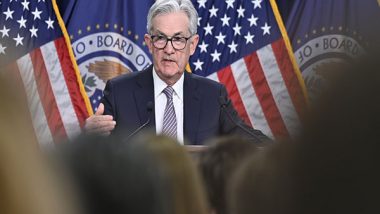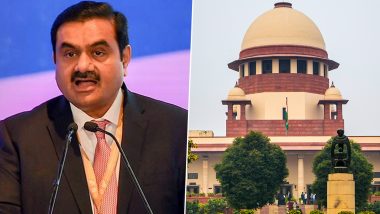Washington, August 17: The US economy is unlikely to enter into a recession in 2023, according to the minutes of the Federal Reserve’s July monetary policy review meeting. “The economic forecast prepared by the staff for the July FOMC meeting was stronger than the June projection. Since the emergence of stress in the banking sector in mid-March, indicators of spending and real activity had come in stronger than anticipated,” showed the Minutes of the Federal Reserve’s July 25-26 meeting.
The minutes said the staff no longer judged that the economy would enter a "mild recession" toward the end of the year. “However, the staff continued to expect that real GDP growth in 2024 and 2025 would run below their estimate of potential output growth, leading to a small increase in the unemployment rate relative to its current level.” Earlier, global rating agencies had forecast a "mild recession" in the US economy. US Economy Added 1,87,000 Jobs in July 2023, Less Than Expected, Says Report.
The US central bank in its July meeting raised its benchmark interest rate by 25 basis points, the highest in the past 22 years at 5.25-5.5 per cent to tame inflation and bring it back to its 2 per cent target. The consumer price index (CPI) in the US, which measures the prices of a basket of goods and services, increased by 3 per cent in June, down from a four-decade high of 9.1 per cent the same month last year. Barring the pause in June, the US central bank has hiked the interest rate for the eleventh consecutive time which was necessitated in the fight against soaring inflation. Rice Demand Rises in US: People Line Up at Grocery Stores to Buy Maximum Allowed Quantity of Food Items Amid India’s Ban on Rice Exports (Watch Video).
Raising interest rates is a monetary policy instrument that typically helps suppress demand in the economy, thereby helping the inflation rate decline.
The minutes published Wednesday local time said the staff stressed that inflation remained “unacceptably high” and that further evidence would be required for them to be confident that inflation was clearly on a path toward the committee’s 2 per cent objective. It said most participants continued to see “significant upside risks” to inflation, which could require further tightening of monetary policy.













 Quickly
Quickly














 GT
GT







